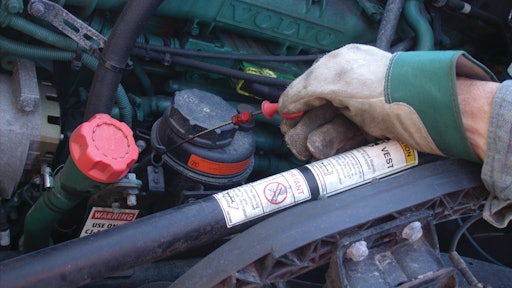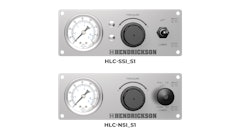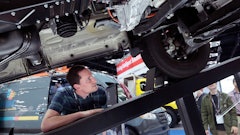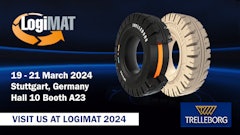
Lubricating oil is the “life blood” of an engine, without which it would rapidly stop working. Lube filters remove impurities and the wear-causing contaminants from the engine’s oil, rather like kidneys purifying the blood in the body.
If the lube filters are not doing an effective job, engine life can be radically shortened. Lube oil not only allows the internal components of an engine to move by keeping the various parts separate from each other, it also carries out a number of other very important tasks, such a removing heat, forming a seal between the cylinder wall and the piston rings, cleaning internal surfaces and transporting debris to the filter.
It may appear that this is a “closed-loop” system, where a fixed quantity of oil is pumped around the same circuit and should be relatively easy to keep clean. However, the combustion process, where the fuel and air mixture is burned to generate power, creates a break in this loop.
Combustion inevitably generates a number of contaminants which pollute the oil. By-products include carbon, partially-burned fuel, water, acids, and varnish and lacquers.
Wear of engine components over time also introduces contaminants into the oil system as recirculating oil, which is used to lubricate and/or cool those components. However, it transfers the wear debris back to the oil sump.
Sludge
High pressure common rail (HPCR) fuel injection systems in modern diesel engines result in much lower exhaust emissions than ever before. Some of these systems, however, will generate contaminants which end up in the oil. This tends to create “sludge,” a black, almost gelatinous, sticky material which can be abrasive, resulting in increased wear-rates.
These contaminants can also lead to premature filter plugging. In the presence of sludge, the bypass valve can open, sending abrasive, unfiltered oil to the moving parts of the engine.
Filtration techniques
There are three common types of filtration techniques used in modern engines:
- Full flow filtration – All of the oil pump output is filtered before going to the engine.
- Bypass filtration – A portion of the oil flow is filtered to a much finer degree than in a full flow system before being put back into the oil sump.
- Combined filtration – Both full flow and bypass media are utilized in a single filter.
Many different types of filtration media are used, depending on the specific circumstance. Types include wire mesh strainers, stacked discs, pleated paper/cellulose, pleated synthetics and depth (for example, tightly packed shredded paper, cloth and wood chips).
Advanced lube oil filtration
Synthetic media provides higher capacity, greater efficiency and less restriction than traditional paper/cellulose.
Cummins Filtration developed and manufactures its own synthetic, multi-layered media called StrataPore (used in numerous Fleetguard replacement oil filters) for the range of diesel engines in operation today. This media is used in the full flow section of the filter to assist in removing the small particles, while simultaneously providing very low resistance to oil flow even in cold oil situations, helping to reduce engine wear.
With the introduction of combination lube filtration technology (placing effective bypass technology in the same container as the full flow), Cummins Filtration helped to revolutionize the industry. As SAE 710813, Lube Oil Filtration Effect on Diesel Engine Wear, and 790098 confirm, by-pass filtration reduces engine wear in the following key areas: upper connecting rod bearing shell, lower connecting rod bearing shell, upper main bearing shell and lower main bearing shell.
Centrifuge
Centrifuge filters, wherein contaminants are separated from oil that is spun at very high speeds, can help extend drain intervals because they offer:
- Lower operating costs – Equipment can operate in extended service intervals with lower part-replacement and service costs.
- Increased vehicle uptime – The efficiency in removing contaminants results in lower engine wear rates than conventional filters, enabling vehicle uptime through extended filter life.
Engine components are constantly under attack from particle contamination. The key to keeping an engine’s lifeblood purified is through effective filtration.
Ted S. Loftis is the director of engineering for Cummins Filtration, the world’s leading designer and manufacturer of filtration and chemical technology products for all engine-powered equipment. A wholly-owned business unit of global power leader Cummins, Cummins Filtration offers a wide variety of OEM and aftermarket systems for diesel engines, transmissions and industrial applications worldwide, including engines ranging from 4L to above 100L in displacement.



























